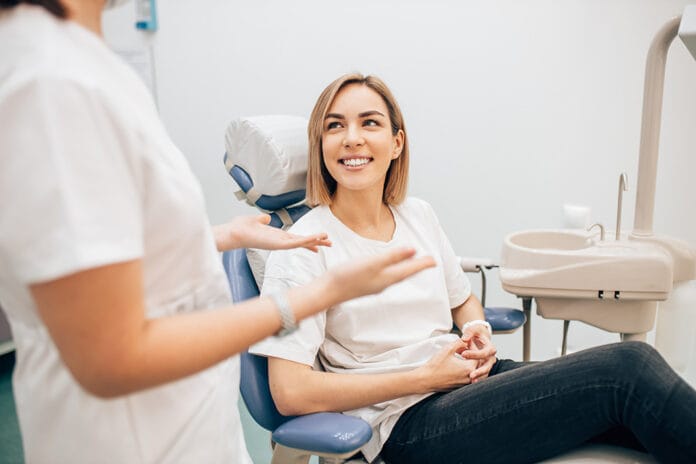Think about something for a moment. How would you feel if there was something everybody else seemed to have, seemed to be able to do, and you couldn’t? What if you practiced it every single day of your life? What if, twice a year like clockwork, you were told that your best efforts to do this thing that everyone else can manage were just not good enough?
This is your patient, your dental patient who brushes three times a day and still has plaque and calculus buildup at every prophy appointment. This is your patient who uses a water flosser every night before bed but bleeds with every probing. This is your patient who rinses with a fluoride mouthwash yet still requires a treatment plan for fillings every year.
Flip the scenario. What if that person was you? How would you feel sitting in the dental chair? Our patients do not see oral health as something purely clinical, with a well-defined methodology behind each measurable goal. They come to us full of experiences and emotions that play a huge part in how receptive they are to a clinician’s oral hygiene instructions. Remembering this can go a long way in being able to use compassionate approaches to patient education.
The patient in the chair could have gone a lifetime with undiagnosed amelogenesis imperfecta or xerostomia, which contributed to a mouthful of restorative dentistry. They could be completely embarrassed that they are unable to meet the expectations that our society has laid out for personal dental care.
Maybe no one ever really took the time to teach them how to brush, and they have been doing it incorrectly their entire life. It happens.
As clinicians, we forget that patients have experiences outside of our dental chair (aside from what they tell us in small talk here and there). Some patients put their self-care on hold to care for children and come to us once the kids are grown, leaving an overabundance of treatment to be done.
So, how do we accommodate the whole patient when we don’t really know their complete life story? How do we impart the necessary oral health care knowledge to them when we don’t fully understand what it is they need?
Step 1: Ask questions
Ask your patients what they have experienced at previous dental visits. Were they diagnosed with new caries every visit? Did they feel like they were asking for more help than they received? Was their oral health being merely managed, or was preventive care a part of their previous treatment? Obtaining a dental history can be equally as vital as a medical history. What feedback did their previous hygienist give them? Their dentist? What do they already know about their teeth, and what do they think they need to learn?
Step 2: Listen to the answers
Really listen. Try to let the patient’s responses clue you in as to where to direct your next question. Let them tell you their story in as much or as little detail as they are able. Don’t rush the conversation. The information you gather will help you tailor the OHI you give.
Step 3: Get buy-in
This is just a fancy way of saying, “ask for permission.” Don’t just launch into brushing and interdental cleaning instruction. Ask patients if they would mind if you gave them a complete step-by-step of how to do something they are pretty sure they have done their entire life. Through confirmation bias, this will increase the attention they are devoting and make them feel like they are a part of the process.
Step 4: Give credit where credit is due
If you get too caught up in the things that need improvement and ignore the things the patient is doing right, you’ll end up with a patient who feels completely daunted, embarrassed, and overwhelmed. Taking time to praise them if you see an area they are cleaning well (or even a little bit better than the rest) will build their confidence in their ability to achieve oral health. So, find even the smallest win and use it to cheer them on.
Step 5: Manage expectations
This goes for the patient as well as the clinician. Don’t anticipate a 180-degree turnaround from one visit to the next, and make sure your patient knows you don’t expect that. It can be a big burden to feel like you are letting your hygienist down.
Pick a quadrant, ask the patient to focus there until the next visit. If they come back with one beautiful quad, praise them! Then ask the patient to focus on a full arch for the next visit. Change takes time as well as effort. Give your patients time to get as far as they are able. Then help them set the bar even higher.
If we could know every dental patient as well as we know ourselves, things would be so much easier. But one thing we can do is treat them with a level of kindness we would want for ourselves while we figure out exactly how we can help them achieve better oral health.
Before you leave, check out the Today’s RDH self-study CE courses. All courses are peer-reviewed and non-sponsored to focus solely on high-quality education. Click here now.












